In the adjoining figure:
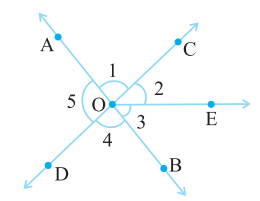
(i) Is ∠1 adjacent to ∠2?
(ii) Is ∠AOC adjacent to ∠AOE?
(iii) Do ∠COE and ∠EOD form a linear pair?
(iv) Are ∠BOD and ∠DOA supplementary?
(v) Is ∠1 vertically opposite to ∠4?
(vi) What is the vertically opposite angle of ∠5?
(i) Yes, in ∠AOE,OC is common arm.
(ii) No, they have no non-common arms on opposite side of common arm.
(iii) Yes, they form linear pair.
(iv) Yes, they are supplementary.
(v) Yes, they are vertically opposite angles.
(vi) Vertically opposite angles of ∠5 is ∠COB.
Topper's Solved these Questions
- LINES AND ANGLESBOOK - NCERTCHAPTER - LINES AND ANGLESEXERCISE - SOLVED EXAMPLES
1 Videos
- LINES AND ANGLESBOOK - NCERTCHAPTER - LINES AND ANGLESEXERCISE - SOLVED EXAMPLES
1 Videos
- INTEGERSBOOK - NCERTCHAPTER - INTEGERSEXERCISE - EXERCISE 1.3
8 Videos
- PERIMETER AND AREABOOK - NCERTCHAPTER - PERIMETER AND AREAEXERCISE - EXERCISE 11.2
8 Videos
Similar Questions
In the adjoining figure:

(i) Is ∠1 adjacent to ∠2? (ii) Is ∠AOC adjacent to ∠AOE?
(iii) Do ∠COE and ∠EOD form a linear pair?
(iv) Are ∠BOD and ∠DOA supplementary?
(v) Is ∠1 vertically opposite to ∠4?
(vi) What is the vertically opposite angle of ∠5?
View SolutionIn Fig. 15, write down: (i) each linear pair (ii) each pair of vertically opposite angles.
View Solution
Knowledge Check
Consider the following statements: when two straight lines intersect:
(i) adjacent angles are complementary
(ii) adjacent angles are supplementary
(iii) opposite angles are equal
(iv) opposite angles are supplementaryA(i) and (iv) are correctB(i) and (iii) are correctC(ii) and (iii) are correctD(ii) and (iii) are correct
In the adjoining figure, write another name for:
(i) ∠1 (ii) ∠2 (iii) angle 3
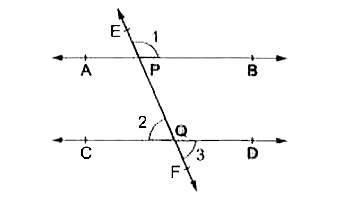
View SolutionIn the adjoining figure, identify(i) the pairs of corresponding angles.(ii) the pairs of alternate interior angles.(iii) the pairs of interior angles on the sameside of the transversal.(iv) the vertically opposite angles.
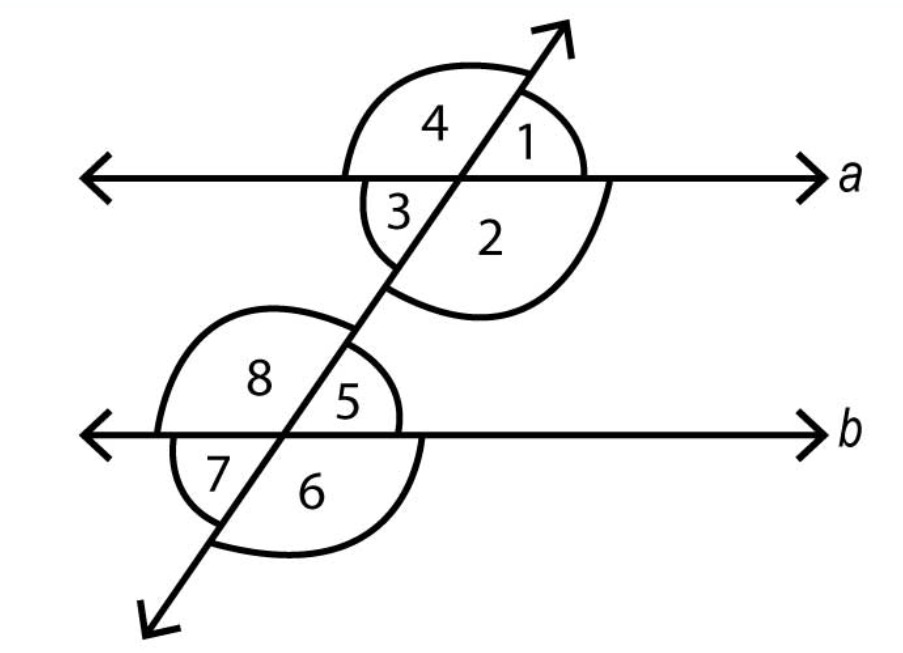
View SolutionIndicate which pairs of angles are:
(i) Vertically opposite angles.
(ii) Linear pairs.
View SolutionIn the adjoining figure, name the following pairs of angles.(i) Obtuse vertically opposite angles(ii) Adjacent complementary angles(iii) Equal supplementary angles(iv) Unequal supplementary angles(v) Adjacent angles that do not form a linear pair
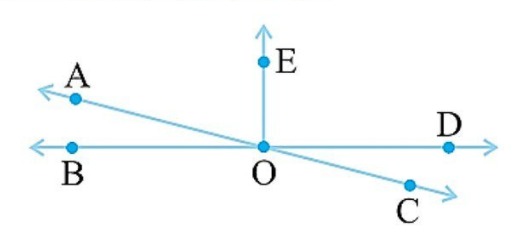
View SolutionFill in the blanks:(i) If two angles are complementary, then the sum of their measures is _______.(ii) If two angles are supplementary, then the sum of their measures is ______.(iii) Two angles forming a linear pair are _______________.(iv) If two adjacent angles are supplementary, they form a ___________.(v) If two lines intersect at a point, then the vertically opposite angles are always_____________.(vi) If two lines intersect at a point, and if one pair of vertically opposite angles areacute angles, then the other pair of vertically opposite angles are __________.
View SolutionIn the given figure identify:
(i) Five pairs of adjacent angles.
(ii) Three linear pairs.
(iii) Two pairs of vertically opposite angles
View SolutionIn each of the following figures, write, if any, (i) each pair of vertically opposite angles, and (ii) each linear pair.
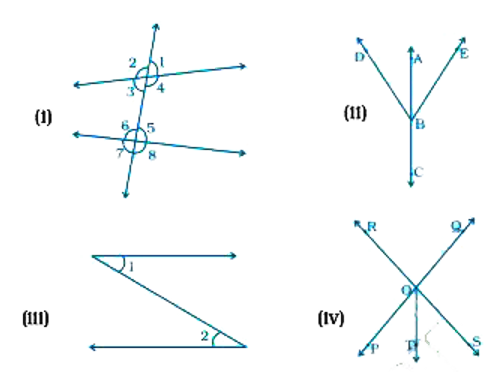
View Solution
